Yes and no. It is possible to get close, but there is no guarantee of an exact match. Even when pigment is 100% uniform, final color is dependent on various factors. Some of these, such as mix design, can be controlled for. Others, like conditions and weather, are more difficult to manage.
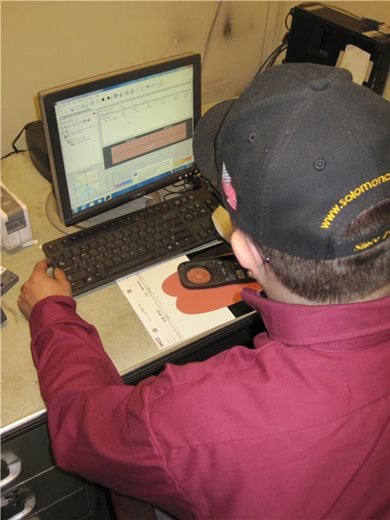
1). Find the concrete producer that supplied the material. They may be able to find records of the mix design and color loading. This is a very reliable method, but it requires a good deal of information that may not be readily available. If the supplier is unknown, the supplier kept poor records, or the job cannot be identified in records, this method will not work.
2). Preform a visual match with a color card. This is one of the fastest, but least accurate matching methods. The only things you need are a quality color card and a good eye. Simply hold a color swatch up to the existing concrete and choose the closest match. The final product may be noticeably different from the example, but it should be within tolerances if the two will not be viewed side by side.
3). Lab matches can yield reliable results. If you are able to provide a sample of the concrete you wish to match, a lab can achieve incredibly close matches. By supplying samples of your intended cement, sand, and aggregate, you can get surprisingly close. Nothing can guarantee and exact match, but this is probably the closest match possible. Solomon Colors is proud to offer color matching and lab services to our customers.
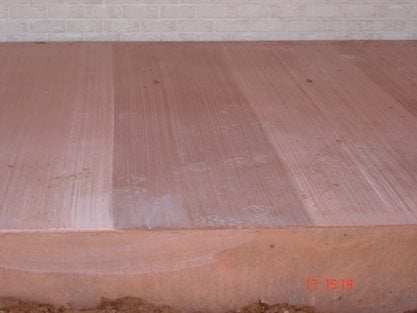
There are a number of reasons integral color jobs may not be the same. Here are just a few possibilities that may explain the color variation:
1). Different mix designs are going to be a common culprit. Every component of the concrete – not just the pigment – will affect final color. White cement will result in a lighter shade while gray cement will be shaded darker. The color of sand and/or aggregate will also affect final color. Water content of the concrete can lighten or darken color. Some admixtures can even affect the final color of the concrete. If any one factor is altered, it can change the appearance.
2). Finishing technique is another common element that affects color. Hard troweled concrete and broom finished concrete may appear to have a different shade, even if the same mix design and pigment loading are used. Other placement and finishing elements, such as added water and subgrade condition, also have the potential to change final color and appearance.
3). Poor pigment selection will obviously result in a bad color match. It isn’t always as simple as making the wrong selection, however. Poorly calibrated or malfunctioning color equipment may be responsible for dosing the wrong color. Miscommunication can also lead to the wrong pigments being used on a job. For example, if the contractor and ready mix producer are not operating off the same color card, it can lead to confusion.
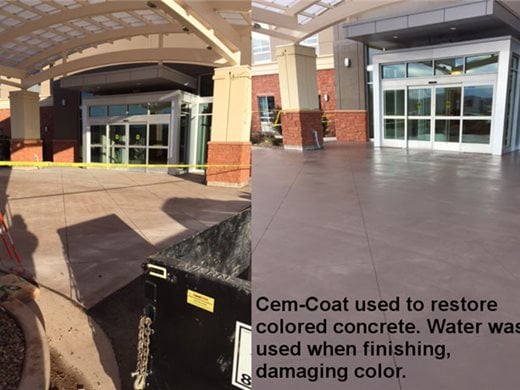
When color doesn’t match, especially when the mismatched slabs are side by side, panic often sets in. The first solution that comes to mind is tear out and replace. Not only is that costly and disruptive, it may not always solve the problem. Here are a few easier ways to correct color:
1). For subtle color correction, a pigmented sealer may be enough. Sealing or resealing one or both slabs with a pigmented sealer can provide a quick and easy fix while providing protection that is already necessary for decorative concrete. One such product is Brickform Tinta’ Seal, which is added to solvent-based acrylic sealers. While easy and subtle, tinted sealers have one drawback. The color is only as resilient as the sealer. If something happens to the sealer, the color correction may be compromised.
2). Cleaning or surface preparation is another simple fix. If the older slab is dirty, a simple cleaning may be enough to brighten it up and yield a closer match. An acid etch or other surface preparation techniques can also be used to remove surface defects and finishing-related causes of mismatched color.
3). When color mismatch is severe, a surface applied coloring agent may be the solution. Secondary coloring products, such as Brickform Cem-Coat, are quickly applied yet resilient. They can be used on one or both slabs for a matching color without altering finish or texture.
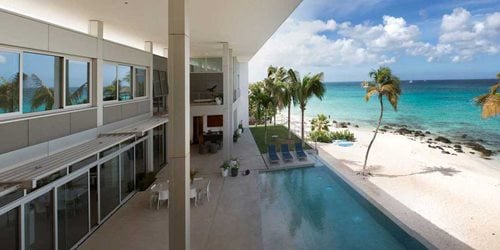
Cool concrete isn't just neat. It's literally cool! Who hasn't had the experience of sprinting over a scorching hot concrete pool deck?
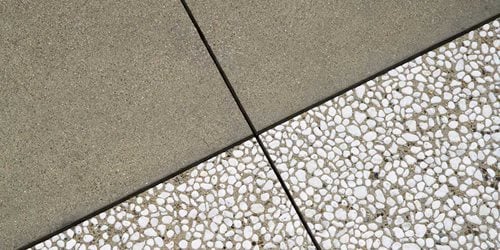
Learn the basics of coloring exposed aggregate and get helpful tips so you can get the most out of your project
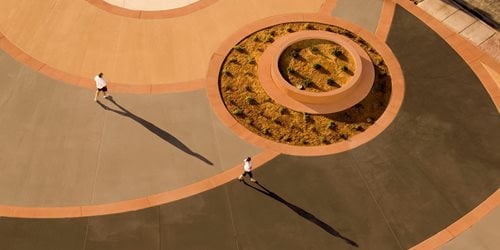
Everything you need to know about adding color to concrete—from selection to installation and maintenance
Explore impressive concrete installations to find inspiration for your next project.
Find out how much color and fiber you'll need for any size project.